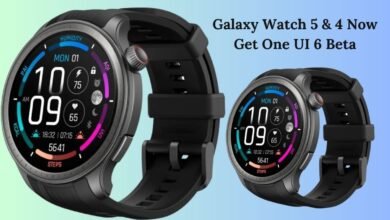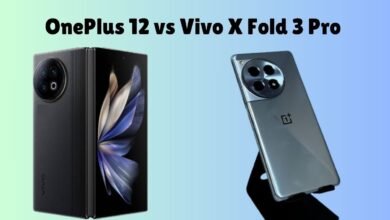Fast charging Technology
Experience fast charging technology that powers your devices quickly, keeping you connected and productive all day.

In today’s fast-paced world, the demand for quicker and more efficient ways to power our devices has led to the development of fast charging technology. Simply put, fast charging is a method that allows batteries to be charged at a much faster rate than traditional charging methods. This technology leverages higher power levels to speed up the charging process, making it a valuable innovation for smartphone users, electric vehicle owners, and other tech enthusiasts who rely heavily on their devices.
Traditional charging methods typically operate at lower power levels, often resulting in longer charging times. In contrast, fast charging technology increases the power input to the battery, reducing the time it takes to reach a full charge. This difference is particularly noticeable in high-capacity batteries where traditional chargers might take several hours to complete the task, whereas fast chargers can accomplish it in a fraction of the time.
The popularity of fast charging technology is on the rise, and for good reason. As our reliance on electronic devices grows, the need for quick and efficient recharging solutions becomes more critical. Fast charging not only saves time but also enhances the overall user experience by minimizing the downtime associated with device recharging. This efficiency can be especially beneficial in scenarios where time is of the essence, such as in business settings or during travel.
Throughout this comprehensive guide, we will explore the various specifications of fast charging technology, its advantages and disadvantages, and its practical applications in everyday life. By understanding the intricacies of fast charging, users can make informed decisions about their charging needs and optimize their device usage. Whether you are a tech enthusiast or simply someone looking to improve your charging habits, this guide aims to provide valuable insights into the world of fast charging technology.
How Fast charging Technology Works
Fast charging technology fundamentally relies on the interplay of voltage and current to deliver power to a device’s battery more rapidly than conventional charging methods. Essentially, fast charging works by increasing the wattage (W) delivered to the device. This is achieved by manipulating two primary factors: voltage (V) and amperage (A).
Here’s a simplified breakdown of how these elements contribute to fast charging:
- Voltage (V): The electric potential difference that drives the current through the circuit. Higher voltage can increase the charging speed.
- Amperage (A): The amount of electric current flowing through the circuit. A higher amperage allows more current to flow, which can also speed up charging.
- Wattage (W): The total power delivered, calculated as the product of voltage and amperage (W = V x A). Increasing either voltage or amperage, or both, increases the wattage, thereby facilitating faster charging.
Various fast charging standards and technologies have been developed to optimize and enhance the charging process:
- Qualcomm Quick Charge: A proprietary technology that allows for higher voltage and amperage levels, resulting in faster charging times. Devices like Samsung Galaxy and certain LG models support this standard.
- USB Power Delivery (USB-PD): A universal standard that increases power delivery by offering higher voltage options. It is widely adopted across different devices, including the Google Pixel and Apple iPhone series.
- OnePlus Warp Charge: This technology focuses on high amperage with lower voltage to maintain fast charging speeds while reducing heat generation, used in OnePlus smartphones.
- Apple Fast Charging: Utilizes USB-PD to deliver higher power levels, allowing certain iPhone and iPad models to charge significantly faster.
By understanding the core aspects of voltage, amperage, and wattage, and familiarizing oneself with the various fast charging standards, consumers can make informed decisions when selecting devices that support fast charging technology. This ensures that they can benefit from reduced charging times and enhanced device usability.
Pros and Cons of Fast charging Technology
Fast charging technology has become increasingly popular due to its ability to quickly replenish battery power. However, like any technology, it comes with both advantages and disadvantages. Understanding these can help users make informed decisions about when and how to use fast charging.
Pros
- Time-saving: Fast charging significantly reduces the time required to charge devices, making it ideal for users with busy schedules. For instance, a quick 15-minute charge can provide several hours of phone usage, which is particularly useful for travelers or professionals who are constantly on the go.
- Convenience: The ability to quickly top up the battery eliminates the need to leave devices plugged in for extended periods. This is beneficial in scenarios such as during a short layover at an airport or a quick break during a business meeting.
- Improved battery performance: Modern fast charging technologies are designed to optimize the charging process, potentially enhancing the overall performance of the battery. This can lead to better battery management and efficiency over time.
Cons
- Potential battery lifespan reduction: Despite advancements, frequent use of fast charging can accelerate the degradation of the battery over time. The high power levels involved can generate more heat, which may negatively impact the battery’s longevity.
- Need for specific chargers and cables: Fast charging often requires proprietary chargers and cables, which can be more expensive and less widely available than standard options. This dependency can be inconvenient if you are in a situation where you do not have access to the necessary equipment.
In real-world scenarios, fast charging proves immensely beneficial for individuals with tight schedules or those who frequently travel, as it allows for quick battery top-ups. Conversely, for users primarily at home or in the office, where longer charging times are less of an inconvenience, traditional charging methods may be more suitable to preserve battery health over the long term.
Choosing the Right Fast Charger for Your Device
In today’s fast-paced world, ensuring your devices are charged efficiently is paramount. Selecting the right fast charger for your smartphone, tablet, or laptop involves understanding compatibility, specifications, and recognizing certified products. This section provides practical advice to help you make informed decisions when choosing a fast charger.
Firstly, it’s essential to verify the compatibility of the charger with your device. Different devices have varied charging requirements, and using an incompatible charger can lead to suboptimal performance or even damage. Check the manufacturer’s specifications for your device, which typically detail the required voltage and amperage. For instance, many modern smartphones support USB Power Delivery (USB-PD) or Qualcomm Quick Charge standards, while some laptops may require higher wattage chargers.
Another crucial factor is recognizing certified fast chargers. Certified chargers comply with industry standards and undergo rigorous testing to ensure safety and efficiency. Look for certifications such as CE, UL, or FCC on the packaging or the charger’s body. These certifications indicate that the charger meets the necessary safety and quality standards.
It’s also vital to avoid counterfeit products. Counterfeit chargers often lack the necessary safety features and can pose significant risks, including overheating or short-circuiting. To avoid these risks, purchase chargers from reputable retailers or directly from the manufacturer’s website. Additionally, be wary of prices that seem too good to be true, as they often indicate counterfeit products.
Several popular brands are known for their reliable fast chargers. Brands such as Anker, Belkin, and Aukey offer a range of high-quality chargers compatible with various devices. For example, Anker’s PowerPort III series and Belkin’s BoostCharge series are highly rated for their performance and durability.
- OPEC+ says goodbye to its $100-a-barrel oil quest
- The Next Notcoin? Telegram-Based Game ‘Hamster Kombat’ to Launch Token on TON
Conclusion: Fast charging Technology
Choosing the right fast charger involves checking device compatibility, ensuring the charger is certified, and purchasing from reputable brands. By following these guidelines, you can confidently select a fast charger that meets your needs and ensures the safety and longevity of your devices.



